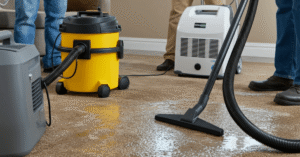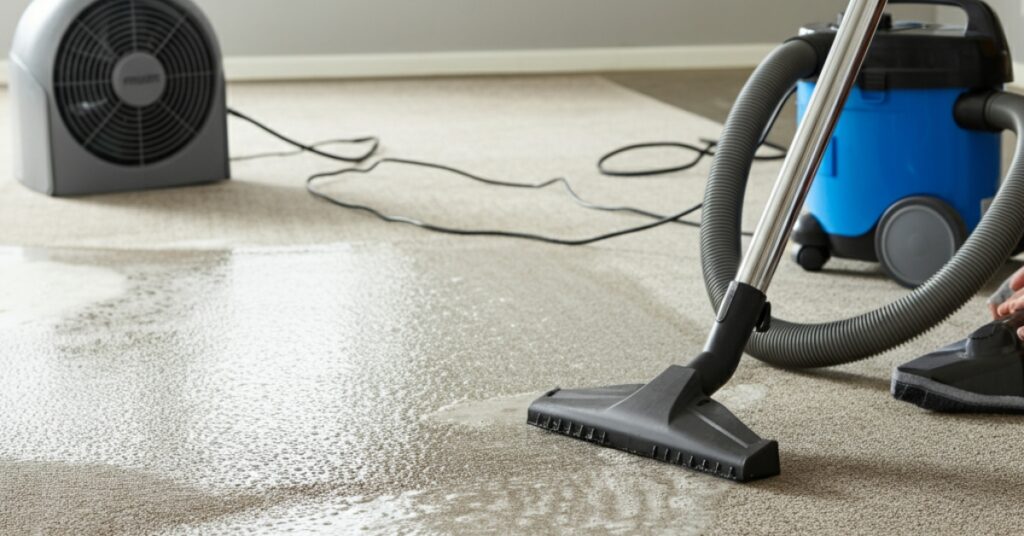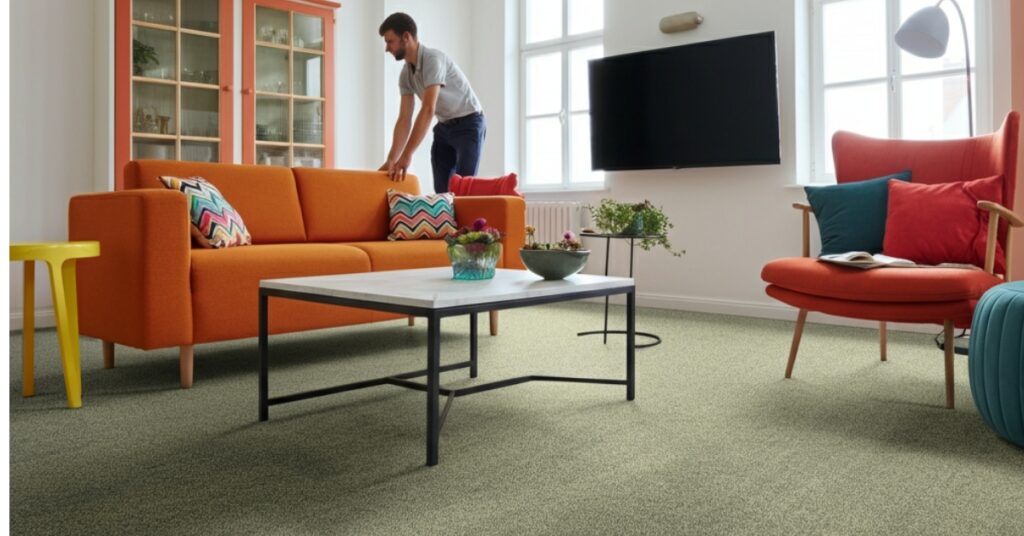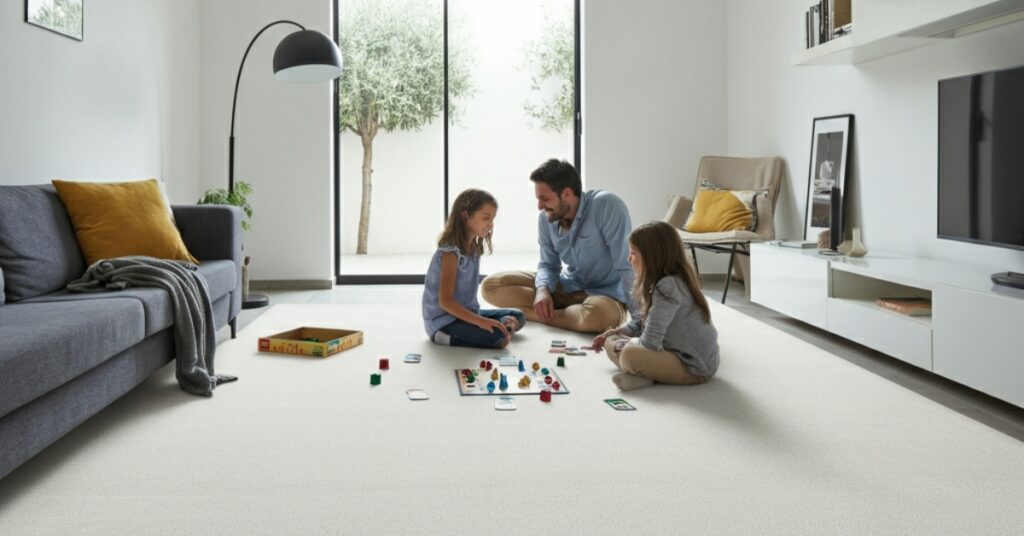As an Amazon Associate, I earn from qualifying purchases.
Discovering a wet carpet can be alarming, whether it’s from a small spill or a major leak. Knowing how to use fans to dry a carpet is one of the most effective ways to prevent long-term damage, such as mold and mildew growth. This process involves more than just pointing a fan at the wet spot; it requires a strategic approach to ensure the carpet dries quickly and completely. Fortunately, with the right technique, fans can be your best tool for tackling this common household problem.
Properly using fans not only saves your carpet but also helps protect the air quality in your home. Fans work by increasing air circulation, which accelerates the evaporation of moisture trapped within the carpet fibers. By understanding the specific steps to maximize airflow and speed up drying, you can efficiently manage the situation and avoid the costly consequences of lingering dampness. This guide will provide a clear, step-by-step process for using fans to restore your wet carpet.
Preparing Your Carpet for Fan-Drying
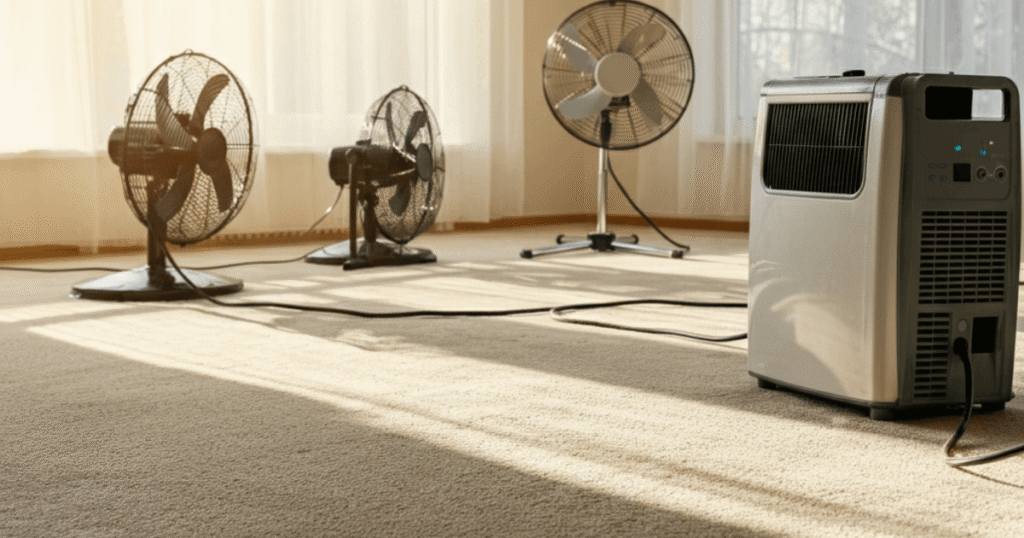
Remove Excess Water First
Before you position your fans, you must remove as much standing water as possible from the carpet. This initial step is critical because fans are most effective at evaporating residual dampness, not drying large pools of water. Leaving excess liquid in the carpet will significantly prolong the drying time and reduce the efficiency of the fans. You can begin by using thick, absorbent towels to blot the area, applying firm pressure to soak up the moisture.
For larger spills or more significant water damage, a wet-dry vacuum is an invaluable tool. It can extract a substantial amount of water from deep within the carpet fibers and the underlying padding, which towels alone cannot accomplish. Removing this bulk water upfront is a crucial preparatory measure that allows the fans to work on the remaining dampness far more effectively. Therefore, dedicating time to this step will ultimately speed up the entire drying process.
Clean the Affected Area
After removing the excess water, it is important to clean the damp area, especially if the liquid was anything other than clean water. Spills from drinks, food, or pet accidents can leave behind residues that may cause stains or odors if not addressed. Use a carpet cleaning solution appropriate for your carpet type to gently clean the spot. This helps prevent bacteria from growing in the damp environment.
Once you have cleaned the area, rinse it lightly with clean water to remove any soap residue, as leftover detergent can attract more dirt over time. Blot the area again with dry towels to absorb as much of the cleaning solution and water as possible. This ensures that the fans will be working to dry a clean surface, which contributes to a better final result and a healthier indoor environment.
Setting Up Fans for Optimal Carpet Drying
Choose the Right Type of Fans
The type of fan you use can make a significant difference in how quickly your carpet dries. High-velocity fans, often called “air movers” or “carpet blowers,” are specifically designed for this purpose and are the most effective option. These fans produce a powerful, focused stream of air that blows directly across the carpet’s surface, maximizing evaporation. You can often rent these from hardware or home improvement stores if you do not own one.
If you don’t have access to a carpet blower, standard box fans or oscillating fans can also work, though they may be less efficient. Box fans can be propped up to direct airflow across the wet patch, while oscillating fans can cover a wider area. Using multiple fans will further increase air circulation and speed up the drying time. The key is to create continuous, steady airflow over the entire damp surface.
Position the Fans Correctly
Proper fan placement is crucial for achieving the best results. You should position the fans so they blow air directly across the surface of the wet carpet, rather than straight down onto it. This technique, known as laminar flow, creates a shearing effect that lifts moisture from the carpet fibers and carries it away. Place the fans at the edge of the wet area, angled low to the ground.
If the wet patch is large, use several fans positioned around its perimeter to ensure even airflow across the entire surface. For very saturated areas, it can be helpful to lift the edge of the carpet and place a fan underneath to dry the padding and subfloor simultaneously. This helps prevent moisture from being trapped beneath the carpet, which could lead to mold growth in the padding.
Enhancing the Drying Process with Other Methods
Use a Dehumidifier
While fans are excellent for promoting evaporation, a dehumidifier works hand-in-hand with them to remove the evaporated moisture from the air. As the fans cause water to turn into vapor, the room’s humidity level rises. A dehumidifier pulls this moist air in, condenses the water, and releases drier air back into the room. This cycle lowers the overall humidity, allowing the fans to continue evaporating water from the carpet efficiently.
Place the dehumidifier in the center of the room to ensure it can draw air from all directions. Set it to a low humidity level, typically between 30-50%, to encourage maximum moisture removal. If you are using fans and a dehumidifier together, keep the doors and windows closed to create a contained environment where the dehumidifier can effectively control the humidity level.
Introduce Warm, Dry Air
Warm air can hold more moisture than cool air, which helps accelerate the evaporation process. If the room is cold, you can use a small, safe space heater to gently raise the ambient temperature. Be sure to place the heater a safe distance from the wet carpet, fans, and any flammable materials. Raising the room temperature to a comfortable level, around 70-75°F (21-24°C), will make the fans and dehumidifier more effective.
However, you should avoid making the room too hot, as excessive heat can potentially damage certain types of carpet fibers, such as wool. The goal is to create a warm, dry environment that encourages quick evaporation without causing any harm. Combining slightly warmed air with strong circulation from fans is a powerful strategy for drying a wet carpet quickly.
Final Steps and Aftercare
Check for Complete Dryness
After running the fans for a considerable amount of time, you will need to check if the carpet is completely dry. The surface might feel dry to the touch, but moisture can remain trapped deep within the fibers and padding. To test for dryness, press a thick stack of paper towels firmly into the carpet for about 30 seconds. If the paper towels come away with any dampness, the carpet needs more drying time.
You should also check for any lingering musty or damp odors, as this is a clear sign that moisture is still present and mold or mildew might be developing. Continue running the fans and dehumidifier until the carpet is dry all the way through and any unpleasant smells have dissipated. Be patient during this final stage, as ensuring the carpet is thoroughly dry is essential to prevent future problems.
Restore the Carpet Pile
Once you have confirmed that the carpet is completely dry, the final step is to restore its appearance. The carpet fibers can become matted or flattened during the wetting and drying process. To lift the pile and bring back its original texture, vacuum the entire area thoroughly. A vacuum with a beater bar or rotating brush is particularly effective for this task.
Vacuuming slowly and in multiple directions will help fluff up the fibers and remove any dirt or debris that may have settled on the surface. For heavily matted areas, you can also use a carpet rake or a stiff brush to gently agitate the fibers before vacuuming. This final touch will leave your carpet looking fresh, clean, and fully restored.
Achieve a Dry and Healthy Home
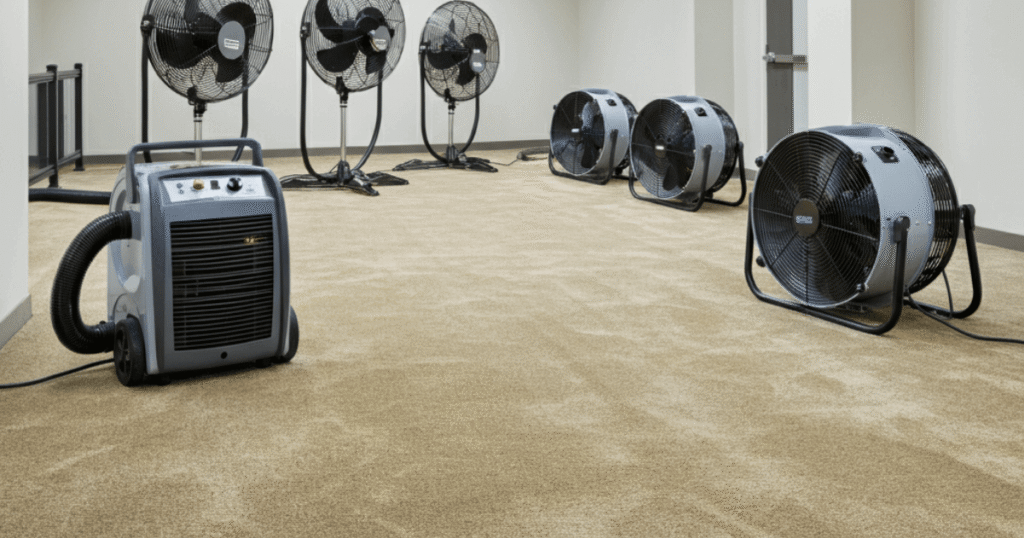
Using fans to dry a wet carpet is an effective method that, when done correctly, can save you from costly repairs and potential health hazards. By preparing the area, setting up your equipment strategically, and enhancing the process with tools like a dehumidifier, you can ensure a fast and thorough drying job. Remember that patience is key, as ensuring the carpet is completely dry is the most important step in preventing mold and mildew. With these techniques, you can confidently handle a wet carpet situation and maintain a dry, healthy home.
FAQs on How to Use Fans to Dry a Carpet
1. How long does it take to dry a carpet with a fan?
Yes, the time it takes can range from 8 hours to several days. The exact duration depends on how wet the carpet is, the type and number of fans used, the room’s temperature, and whether a dehumidifier is also in use.
2. Can I walk on the carpet while it is drying with fans?
No, it is best to avoid walking on the carpet while it is drying. Foot traffic can compress the wet fibers, making it harder for air to circulate and slowing down the drying process. It can also track dirt onto the damp, clean carpet.
3. Will using fans to dry a carpet use a lot of electricity?
Yes, running multiple fans for an extended period will consume electricity, but the cost is generally minimal compared to the expense of replacing a carpet damaged by mold. Using energy-efficient fans can help keep electricity usage down.
4. What should I do if my carpet still smells musty after it’s dry?
If a musty smell persists, it likely indicates that some moisture remains or that mold or mildew has already started to grow. Try sprinkling baking soda on the dry carpet, letting it sit for several hours, and then vacuuming it up. If the odor continues, you may need a professional carpet cleaner to treat the area for mold.
5. Is it better to use fans or a dehumidifier to dry a carpet?
For the best and fastest results, you should use both. Fans accelerate evaporation by moving air across the carpet’s surface, while a dehumidifier removes the resulting moisture from the air. Using them together creates the most efficient drying system.
As an Amazon Associate, I earn from qualifying purchases.

